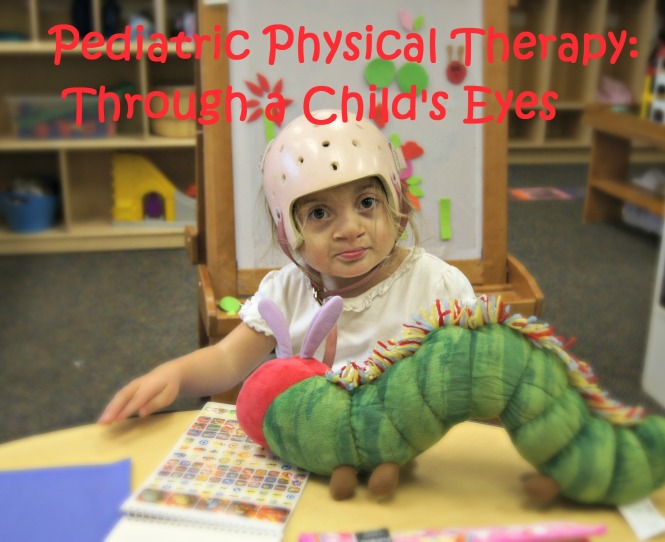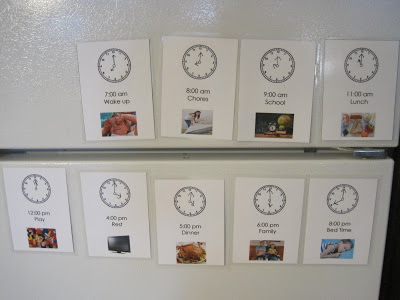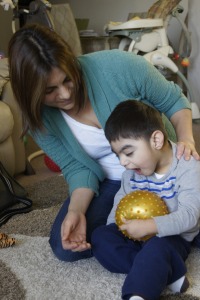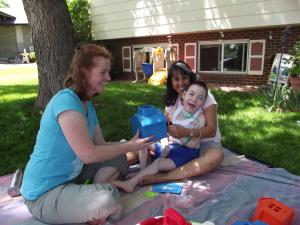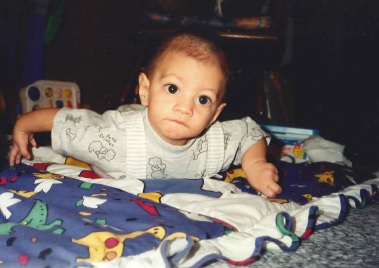By Fawn Gold, TLC SpeechTherapist
January in Colorado is a chilly month! And with cold temperatures, ice, and snow, comes the need for indoor activities with children. Find a whole month’s worth of indoor speech and language activities to help keep kids busy (and having fun!) while developing speech/language acquisition skills, and oral motor skills in the chart below:
| Make hot chocolate and talk about each step involved in preparation (first, second, third, etc.). | When getting ready to go outside, talk about the purpose of coats, hats, scarves, and why we need to wear them. | Name four animals you see in the winter/cold climates and find pictures to discuss how they are similar and different from each other. | Act out and talk about the verbs jump, crawl, kick, throw, catch, and other movements that can be demonstrated in the living room. | Race cars on a table and talk about the differences between fast and slow. |
| Read a book about winter and ask your child to recall five details from the story. | Find items of different textures (rough, soft, hard, etc.) and put them in a bag and have your child guess what they are. | Use silverware to make a pattern and talk about what’s first, last, and what will come next. | Take turns thinking of things that are white like the snow. Where can you find each of the things you list? | Help your child find 10 words in a book or magazine that start with the same letter as your child’s name |
| Find five things in the kitchen and talk about how they are used, and what you can make with them. | Make snowballs of various sizes and talk about the differences between big and small. | Find all the tables in your house and talk about their sizes and shapes. Ask your child, what can you do on each table? | Make a grilled cheese sandwich and label and talk about the ingredients. | During a meal, include a variety of food textures and talk about soft, crunchy, chewy, etc. |
| Have your child help sort the laundry and match colors. | Write the names of all family members and then count the letters and talk about long and short. | Find several pairs of shoes and arrange them from biggest to smallest. | Have your child go to three rooms in your house and find five things in each room that are blue | While driving, ask your child about all of the different colors of houses, buildings, etc. that they see. |
| Walk between two buckets transferring cotton balls on a spoon and talk about full and empty. | Take turns hiding a small object under one of three bowls and guessing which bowl it’s under (1st, 2nd, or 3rd). | During bath time, talk about which toys or objects float and sink. | Use play-doh to make a snowman and talk about all of the body parts. | Take turns naming as many different animals as you can. |
Are you looking for a pediatric speech, physical, or occupational therapist for your child? TLC Learning Center has a highly rated pediatric therapy center, in addition to our 4 Star ranked preschool education and infant care center. Call us at (303)776-7417) to learn more.



